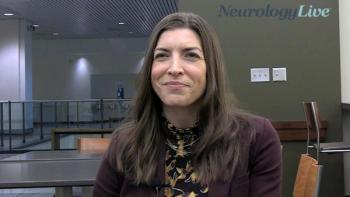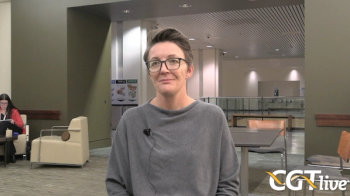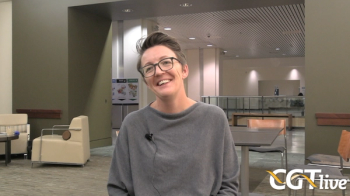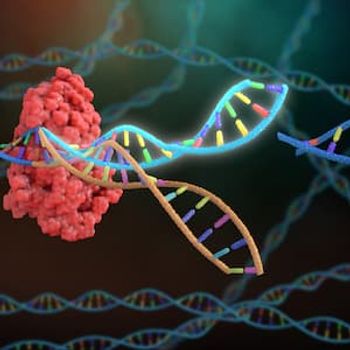
Sickle Cell Disease Cell Therapy Clinical Trial Enrolls First Patient
Details on the phase 1/2 CEDAR trial were presented at the 2021 ASH meeting.
The first patient has been enrolled in the phase 1/2 CEDAR trial (NCT04819841) of GPH101 (Graphite Bio), an investigative Cas9-edited autologous CD34+ cell therapy for the treatment of
“GPH101 is the first investigational therapy to enter clinical development that uses our next-generation gene editing platform technology to directly correct the mutation in the beta-globin gene that causes sickle cell disease,” Josh Lehrer, MD, chief executive officer, Graphite Bio, said in a statement.1 “Using our gene correction approach, we have demonstrated in preclinical studies an ability to decrease the production of harmful sickle hemoglobin and restore the expression of normal adult hemoglobin. This approach has the potential to restore normal physiology and is viewed as the gold standard for curing sickle cell disease. We are thrilled that our first patient is now enrolled in our CEDAR clinical trial, and we look forward to evaluating GPH101’s potential as we continue to advance its development with urgency in hopes of delivering a curative therapy to the sickle cell community.”
The hematopoietic stem cell (HSC) therapy GPH101 is developed using Graphite’s next-generation targeted gene integration platform. The platform uses Cas9 technology and a non-integrating DNA template to correct the mutation in the β-globin gene through the homology directed repair (HDR) cellular pathway.
READ MORE:
Further details on the phase 1/2 trial were presented at the
“While allogeneic transplant is the only available cure for sickle cell disease, the procedure has several limitations, mainly lack of available donors and risk of graft-versus-host disease. Other available therapies are considered palliative as they do not specifically reverse end-organ damage. This type of gene therapy – reducing sickle hemoglobin production at the same time as restoring adult hemoglobin expression through direct gene correction – would be an ideal curative option in sickle cell disease,” Kanter said in a statement.3 “As an investigator in the CEDAR trial, I look forward to assessing GPH101’s potential to be a curative option for patients.”
Kanter discussed the CEDAR trial, which is an open-label, single-dose, multi-site trial that plans to enroll around 15 participants with severe SCD. She presented the GPH101 treatment process, from local stem cell selection and cryopreservation to shipment to a central manufacturing facility.
The CEDAR trial is primarily evaluating the safety of GPH101 by measuring overall survival, mortality, adverse event incidence, and HSC engraftment. Secondary outcomes include pharmacodynamics and measures of exploratory efficacy such as levels of HbA, HbS, and total hemoglobin, as well as clinical manifestations of SCD such as vaso-occlusive events and acute chest syndrome. The trial will also assess changes in organ function, red blood cell health, and gene correction. Graphite expects to dose the first patient in the first half of 2022 with preliminary data available by the end of 2022.
“Sickle cell disease is a devastating illness for which a cure is desperately needed. By directly correcting the mutation that causes sickle cell disease, we believe that GPH101 has the potential to be a one-time cure that restores normal physiology and alleviates the life-threatening morbidities associated with the disease,” Lehrer added to a more recent statement.3 “We are excited to share details about our CEDAR clinical trial for GPH101, in which we recently enrolled our first patient, and we look forward to continuing to advance GPH101’s development in anticipation of sharing initial proof-of-concept data by the end of next year.”
REFERENCES
1. Graphite Bio enrolls first patient in phase 1/2 clinical trial of GPH101 for sickle cell disease. News release. Graphite Bio. November 17, 2021. https://www.businesswire.com/news/home/20211117005527/en/Graphite-Bio-Enrolls-First-Patient-in-Phase-12-Clinical-Trial-of-GPH101-for-Sickle-Cell-Disease
2. Kanter J, DiPersio JF, Leavey P, et al. Cedar trial in progress: A first in human, phase 1/2 study of the correction of a single nucleotide mutation in autologous HSCs (GPH101) to convert HbS to HbA for treating severe SCD. Presented at: 63rd Annual ASH Meeting; December 11-14, 2021, Atlanta, GA. Abstract 1864
3. Graphite Bio presents overview of phase 1/2 CEDAR Trial evaluating investigational gene editing therapy GPH101 in sickle cell disease at 63rd ASH Annual Meeting and Exposition. News release. Graphite Bio. December 11, 2021. https://www.businesswire.com/news/home/20211211005014/en/Graphite-Bio-Presents-Overview-of-Phase-12-CEDAR-Trial-Evaluating-Investigational-Gene-Editing-Therapy-GPH101-in-Sickle-Cell-Disease-at-63rd-ASH-Annual-Meeting-and-Exposition
Newsletter
Stay at the forefront of cutting-edge science with CGT—your direct line to expert insights, breakthrough data, and real-time coverage of the latest advancements in cell and gene therapy.










































